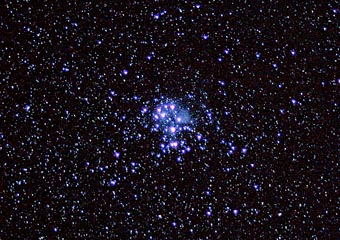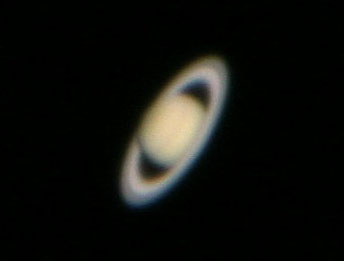 Giselle's school is doing one of the "help support the school by selling candy, candles, and magazine subscription" drives. And of course, she's all excited about what little plastic prizes she could get if she sells x number of things. I want to help the school, and I want her to be excited about helpful activities, but selling boxes of froofroo popcorn and subscriptions to Reader's Digest doesn't sit too easy with me. Of course it's not like the kids who come through the neighborhood a couple times a month selling peanut brittle and candy bars to help them on their way to some vacation camp in Stickerbush, New Mexico, so that they have something to do to keep them out of gangs and petty theft. Which pretty much seems like a low-grade protection racket to me. I guess by comparison, selling stuff that people don't want to help fund the school isn't as strange. So I'm going to bring the brochures to work and maybe get some sympathy.
Giselle's school is doing one of the "help support the school by selling candy, candles, and magazine subscription" drives. And of course, she's all excited about what little plastic prizes she could get if she sells x number of things. I want to help the school, and I want her to be excited about helpful activities, but selling boxes of froofroo popcorn and subscriptions to Reader's Digest doesn't sit too easy with me. Of course it's not like the kids who come through the neighborhood a couple times a month selling peanut brittle and candy bars to help them on their way to some vacation camp in Stickerbush, New Mexico, so that they have something to do to keep them out of gangs and petty theft. Which pretty much seems like a low-grade protection racket to me. I guess by comparison, selling stuff that people don't want to help fund the school isn't as strange. So I'm going to bring the brochures to work and maybe get some sympathy.
We (mostly me) did some more telescoping this weekend. We drove up to Anderson Mesa Saturday night and got in some great dark sky gazing. It's a hilltop where Lowell has a satellite observatory set up that doesn't swim in city lights like the historic Lowell Observatory does. Giselle was bummed out because Amanda and Harrison were spotting all the shooting stars and she was missing them. Another two local amateur astronomers were there observing. Bill Ferris is the president of the Coconino Astronomical Society, and his cohort Brent were most helpful in pointing out various sights and constellation markers. He was using a 10" reflector that showed some really detailed views.
When I was first setting up the scope and getting things lined up, I started to notice the reeking smell of horse manure. It finally got so bad that I did a red-flashlight survey of the surroundings and found that I had parked the car such that both driver and passenger doors opened into huge piles of the stuff. Lovely. Well it was too late now. I just let Amanda and the kids know where they were and tried to make peace with the wafting odors.
There is a constellation that rides the Milky Way in the south sky called Sagittarius. It's supposed to represent an archer, but looks more like a teapot. This was the first time I had actually done a naked eye observation of it from a dark sky location. The amount of detail and richness of objects visible to the naked eye was really shocking to me. The beauty and staggering size and distance of the treasures up there really appeals to me. Although I can't truly capture how spectacular they are, I did work on some more photos. At first it was quaint and fun, with a pack of coyotes yapped high-pitched giggles at each other off in the distance, and the elk chiming in with their whale-like calls now and then. But it got a little hairy when a rustling noise sent me thrashing for my flashlight to find out that sure enough, a fluffy little skunk was headed my way. They don't shoo away easily, what with having the biochemical advantage and all, so I hid in the car at one point. I haven't developed the Grizzley Adams mentality just yet, and I'm really not sure I'm ready to see if I can live as one with the skunks of the wild. So anyway, on to the pictures...
This image is of the Milky Way along the constellation Cygnus. I didn't shoot through the telescope with this shot. I just attached the camera to the top of the scope so that the mount it sits on could rotate with the sky and allow a series of nice long exposures. You can see dark clouds of dust blocking some of the light from the Milky Way, as well as some red nebulae speckled in spots.
Large Size Image (757K)
Medium Size Image (202K)
This next image is of the constellation Orion. If you look in the belt region, you can see some of the nebulas Orion is famous for.

Large Size Image (555K)
Medium Size Image (129K)
This shot is of the Pleiades star cluster. I had a little trouble bringing out the blue nebula behind it without adding ugly halos around the stars.

Large Size Image (340K)
Medium Size Image (136K)
After shooting those 3, I moved to shooting through the telescope eyepiece. This is a portion of the Double Star Cluster in Perseus

And here is an much closer image of the M42 nebula in Orion:

Large Size Image (128K)
Medium Size Image (55K)
And here's Saturn:

Venus:

Mercury was a little harder to focus on especially as it was very close to the horizon and was getting smeared out by the thicker air:

The moon was a very cool sight through the telescope as it rose above the trees. It's hauntingly thin crescent had me imagining that the Nostromo should come cruising out of the brightening dawn and across the view. It was definitely a sci-fi view:


So that's it for now. Thankye for stopping by. Sorry I didn't have any really entertaining stories of my neuroses to tell this time (sancho).

Leave a comment